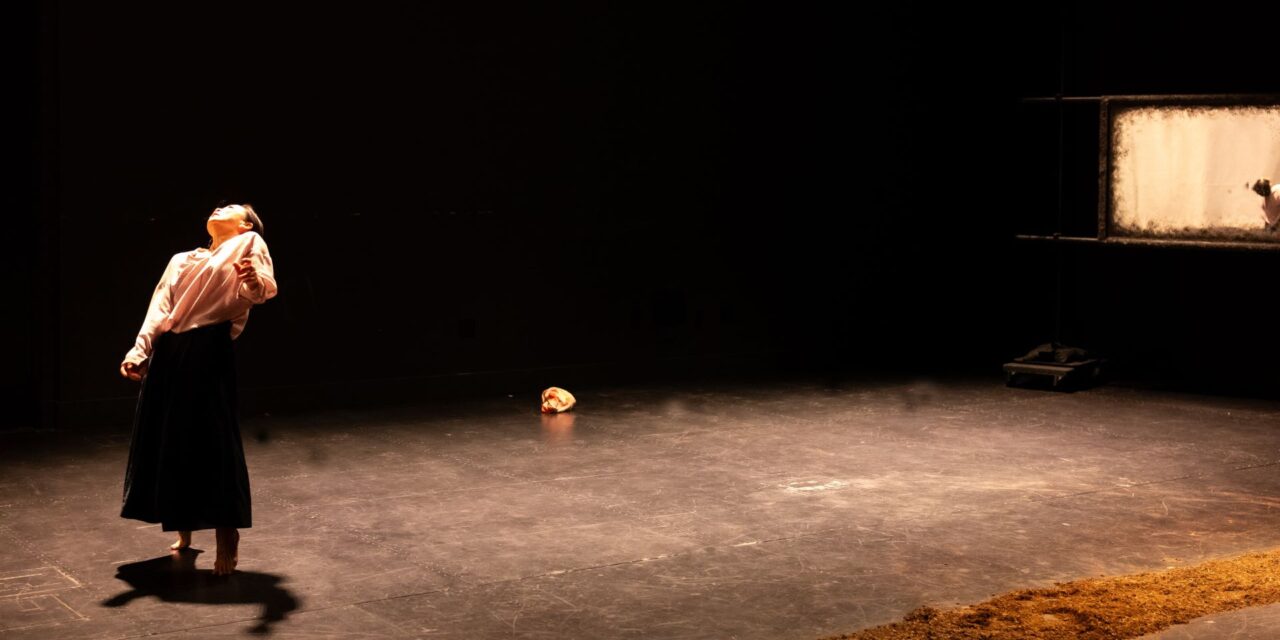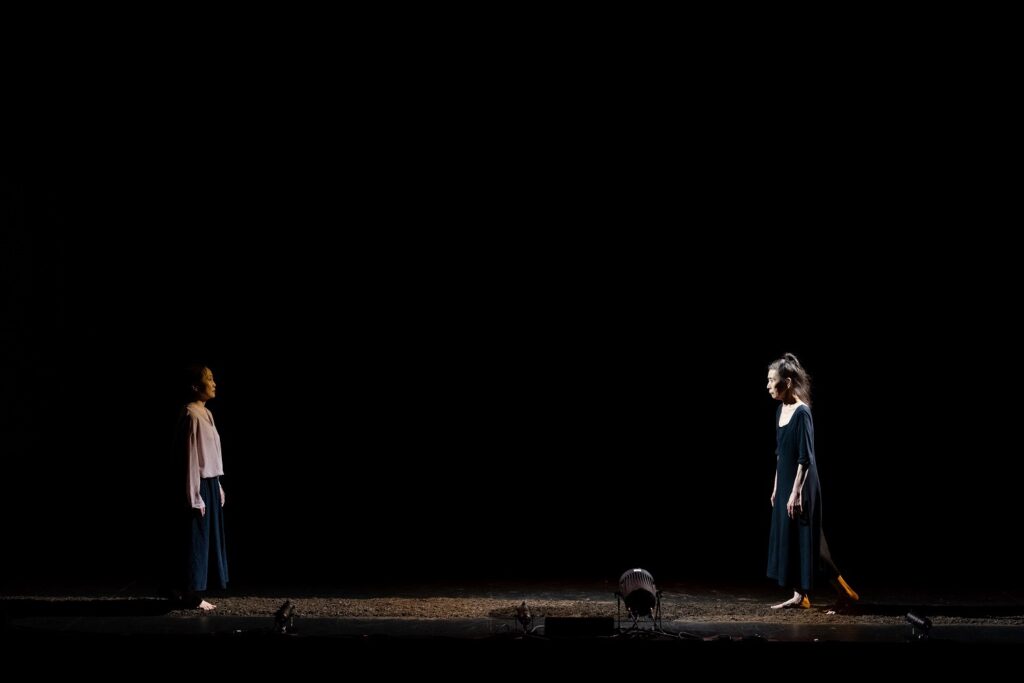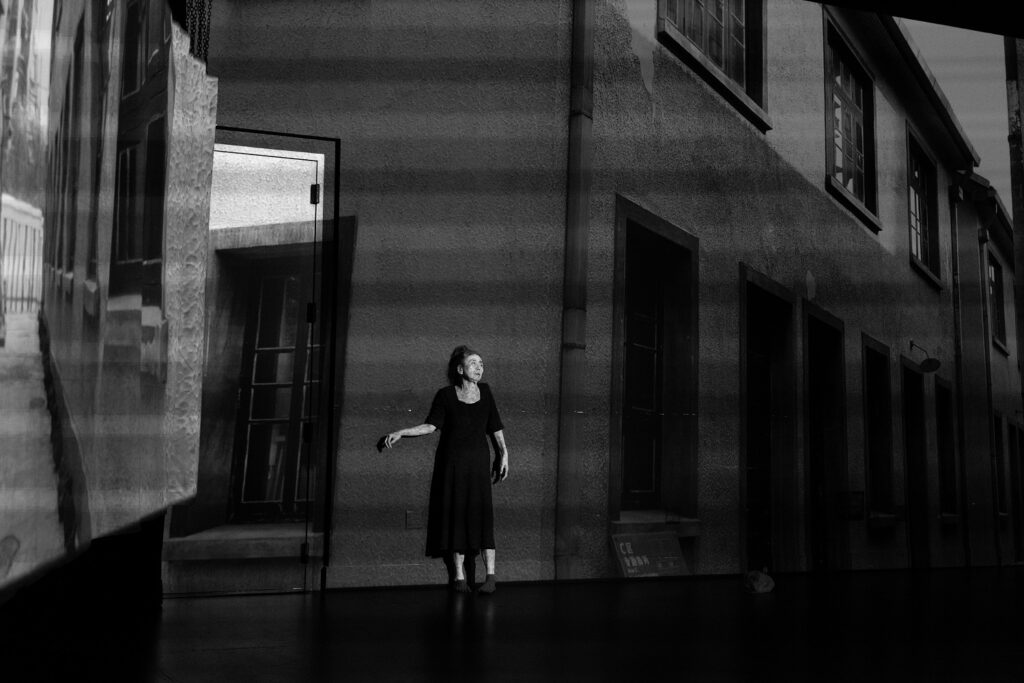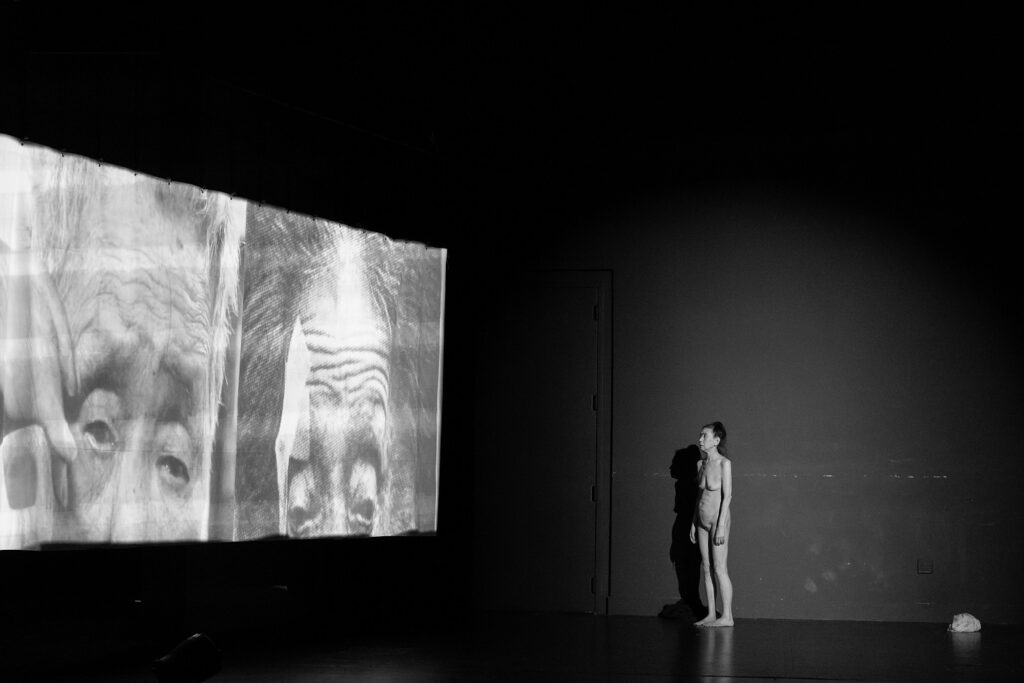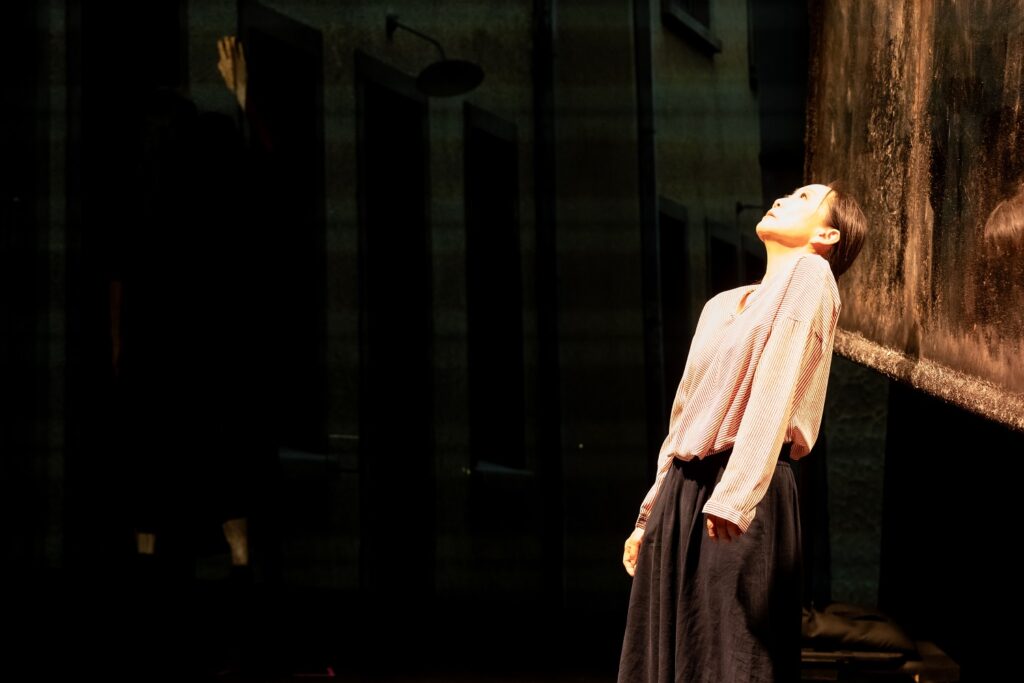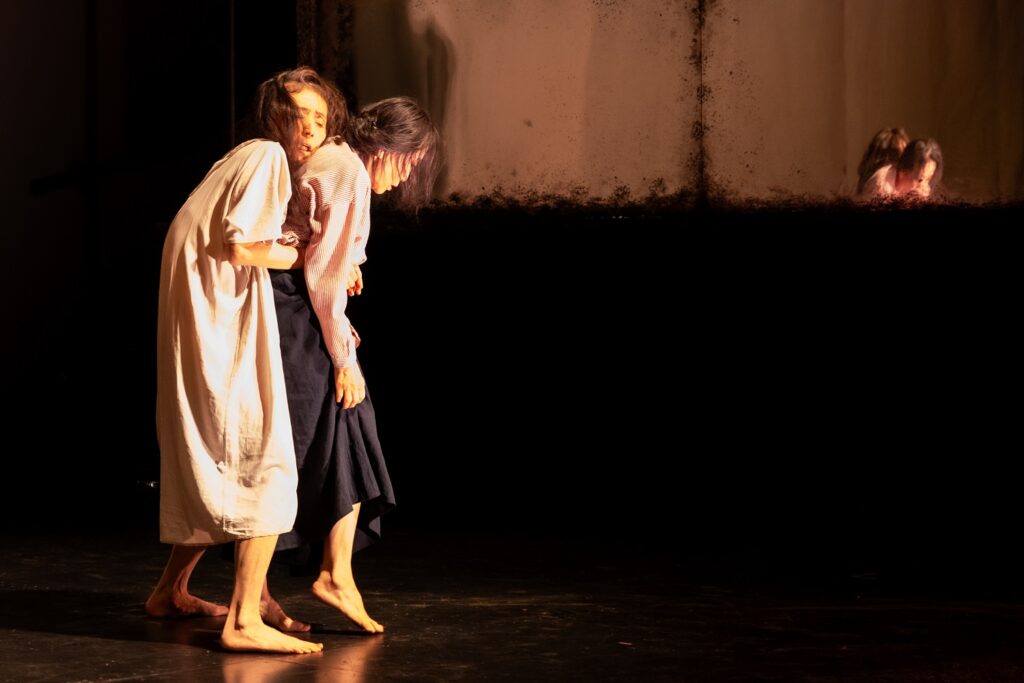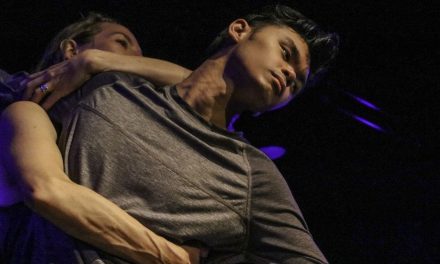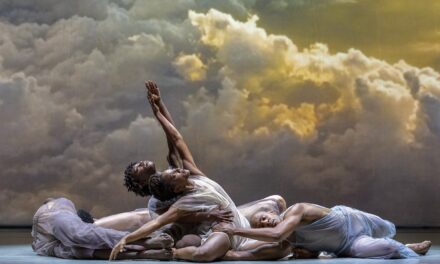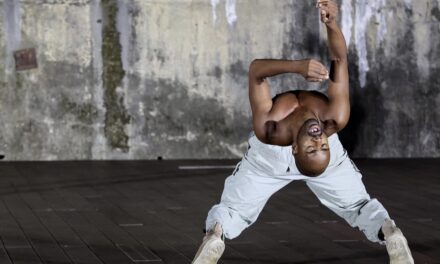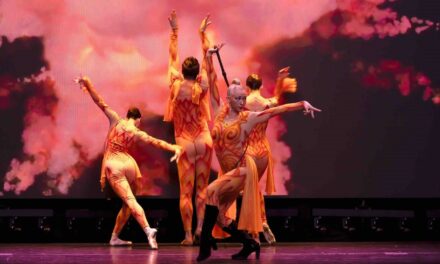On film, Eiko Otake and Wen Hui sat discussing what is the war, what they remember as children or what they have learned from their parents and relatives. At first Hui says that she had no experience with war, but as their talk progresses, she learns that the understanding of war can come from the memories of their relatives who were in Japan or China during World War II. Their faces displayed the effects of those internalized memories and what it has cost the people of their two countries.
Otake and Hui’s “What Is War” was commissioned by the Walker Arts Center and Co-commissioned by UCLA’s Center for the Art of Performance (CAP UCLA), Jacob’s Pillow, and Colorado College Theater & Dance Department. Their performance at the UCLA Nimoy Theatre on Thursday, April 17, 2025 left me almost speechless and it haunted my thoughts through the night. I was born after WWII and like Otake and Hui, I remember WWII from family stories and documentaries. Unlike them, none of my family lived directly beneath falling bombs.
Otake and Hui have known and worked together since 1995 and their common histories adds to the power of their collaboration. Their bodies carry the memories of their ancestors and their faces, especially Otake’s, show how all this has affected them.
Some may remember Eiko Otake through her work with her husband, Takashi Koma Otake. Their company Eiko + Koma became well known in 1972 and in 2011, the Los Angeles Times reviewer Laura Bleiberg wrote about “Water”: “the avant-garde performance duo Eiko and Koma returned to the wet medium in which they have created some of their most celebrated dances, evoking an intense hour-long journey of life, death, peace, and sadness.”
A journey best describes “What Is War.” It is a journey from the present lives of Otake and Hui back into the memories of their elders and into the audience who sees and feels the pain, anguish, loss, anger and other emotions known only to those who have experienced war directly.
Via projected photographs and film, we journeyed to China to see the Nanjing Museum of the Site of the Lijixiang “Comfort Station”, a division of the Nanjing Massacre Museum. There we saw the faces of Chinese women who survived being “Comfort Women,” women and girls who were driven into sexual slavery by the Imperial Japanese Armed Forces during World War II. The number of women involved is unknown but estimated to be between 20,000 and 200,000.
As the film ended, a photo of one of the buildings at the “Comfort Station” was projected against the back wall. Otake leaned against and felt her way along the building and as she passed by its windows, her hands appeared to enter into the building’s recesses and touch the window’s glass. It was an amazing illusion.
Another beautiful theatrical moment occurred as Otake and Hui stood downstage center, their back to the audience. They were lit from behind by a bright light casting large shadows against the back wall. As they walked upstage their physical bodies slowly became one with their dark images; perhaps this was an expression of the past meeting the present?
The movement throughout the solos and duets in “What Is War” was primarily performed slowly. It could be described as contorted, but what was seen was two women abstractly and realistically expressing the emotions and memories stored in the bodies of women who suffered through war. In one scene Otake removes her black dress and walks stark naked very slowly towards the audience. While standing perfectly still downstage center staring forward with unseeing eyes, her extremely thin body took on the image of one of those women. It was a poignant moment that demonstrated Otake’s genius as a performer and actress.
That slowness was shattered as Hui ran into the space from offstage appearing as a woman driven mad by what she as seen and experienced. She moved randomly about the stage while appearing to try and remove those memories from in and outside of her body. Unable to succeed, she finally collapsed to the floor.
The harsh and very appropriate lighting for “What is War” was by Katelan Braymer, original lighting design by David A. Ferri. The Sound Design was by Duncan Woodbury; Dramaturgy by Iris McCloughan; Original mirror design by Carina Rockart; and Mirror construction by Paul Martin and Holly.
To learn more about the UCLA Nimoy Theatre, please visit their website.
For more information about CAP UCLA, please visit their website.
Written by Jeff Slayton for LA Dance Chronicle.
Featured image: Wen Hui in “What is War” – Photo by Jason Williams

